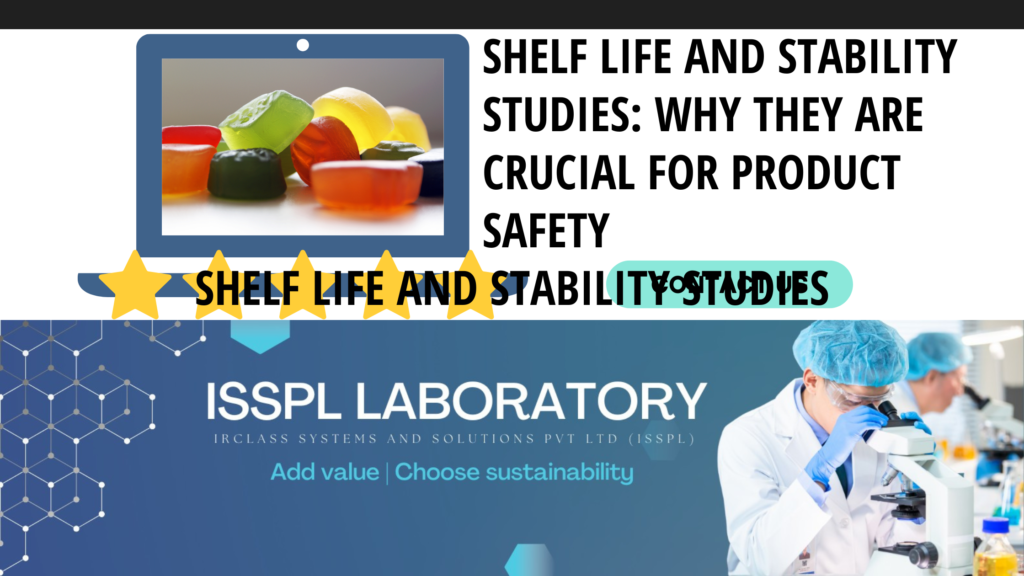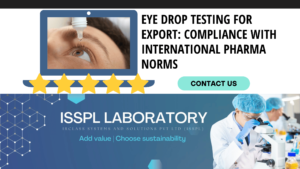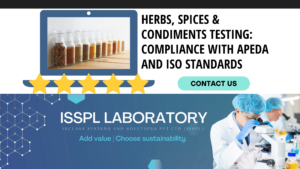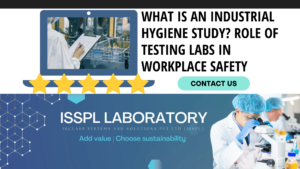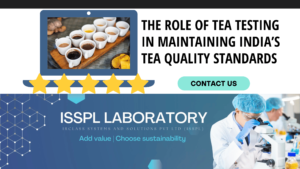An Overview by Team ISSPL - Analytical Testing Laboratory in India
ToggleProduct safety is not an option in today’s competitive, high speed and highly regulated economy. People want safe and effective products, whether it is food, medicines, cosmetics or chemicals. These attributes have to be stringently validated by the manufacturers and shelf life and stability studies form part of this.
Shelf life and stability studies are stability tests that examine the characteristics of a product at a given time. The studies define the period within which the product can be safely used, the conditions for storage and ensure the effectiveness and quality of the product throughout its life cycle. Failure to conduct such testing exposes manufacturers to the dangers of putting consumers’ lives at risk, breaching the law and damaging their reputation.
In this article we will look at what shelf life and stability studies are, the methods employed and the advantages to manufacturers.
Introduction
The period of time for which a product can be stored before it becomes dangerous or undesirable for its intended purpose is referred to as shelf life. Stability tests are employed in order to find out how temperature, humidity, light and packaging influence the quality of a product over time.
In industries like food and pharmaceuticals where the product is sensitive and can affect the lives of the consumers, lead to recall of the product and legal consequences the risks are high. Stability testing helps manufacturers to manage these risks by establishing that the products are safe and of the right quality at any time within the shelf life.
Key questions addressed by shelf life and stability studies include:
- How long can we maintain the product to be safe and effective?
- What are the conditions of storage?
- In what ways does packaging influence product stability?
These questions assist manufacturers in gaining confidence in their products and offer compliance with the required legal requirements.
Importance of Testing
Shelf life and stability studies are crucial for several reasons:
- Consumer Safety
Perishable products can turn into a hazard or, at best, an unusable item. For instance, expired food may develop bacteria or decomposed chemicals in pharmaceuticals may not be potent or may yield toxic products. Stability testing is done to check on the stability of products for the required shelf life of the product.
- Regulatory Compliance
Many product categories are required by the regulatory bodies such as FDA, EMA and FSSAI to undergo stability testing. Penalties may include fines, recall or market ban.
- Brand Reputation
Quality of the product must be consistent and consumer confidence on quality of the product is paramount. A single product safety issue can be disastrous to a brand.
- Market Viability
Shelf life is critical for manufacturers to determine the time taken for the product to reach the consumer and to reduce wastage. Lack of stability of products may not be able to endure transportation or storage hence lead to loss of money.
Manufacturers actively perform shelf life and stability tests to meet the consumers, legal and distribution requirements.
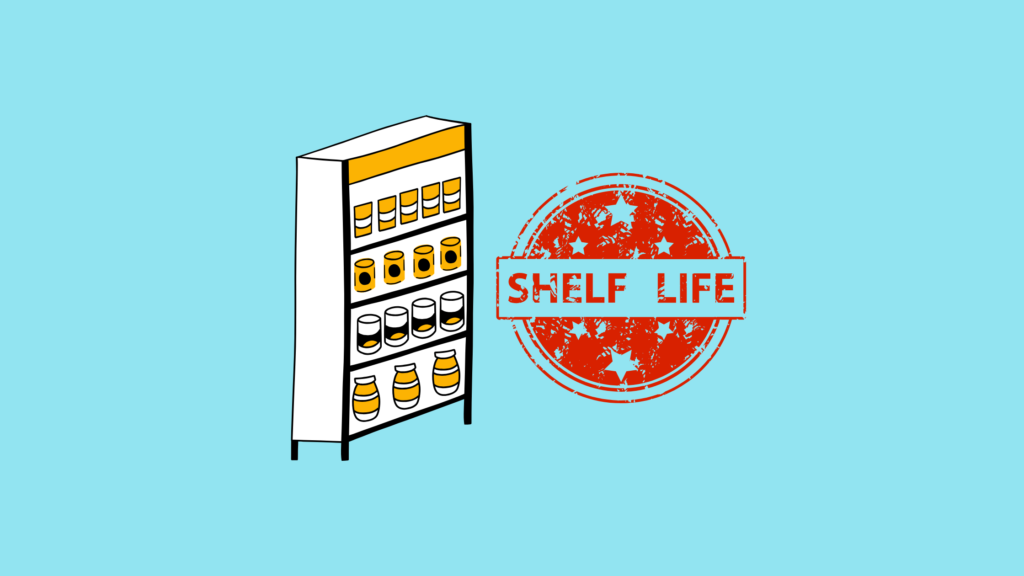
Methods Involved
Shelf life and stability studies employ a number of test methods that try to mimic real life conditions and see how a certain product will perform in the future.
1. Accelerated Stability Testing
- This is done to expose the products to high conditions (higher temperatures and humidity) in order to achieve long term storage effects within a short span of time.
- It allows shelf life estimation and quick detection of potential stability issues.
2. Real-Time Stability Testing
- Products are exposed to normal conditions for a long time in order to find out how they are really affected.
- It is the best estimate of shelf life, but it is the slowest.
3. Microbiological Testing
- It assesses the effect of microbial growth on the safety and quality of the products.
- Employed widely in the food and pharmaceutical industries to protect products from being spoiled by bacteria, yeasts and molds.
4. Packaging Interaction Studies
- It shows how the product comes into contact with packaging materials in the course of use.
- Checks that the packaging does not have any negative impact on the shelf stability or safety of the product.
5. Environmental Stress Testing
- Products are exposed to conditions of light, vibration and freezing temperatures.
- Hazards are recognized and proper measures for handling and storing are set.
6. Chemical and Physical Analysis
- It tracks changes in parameters including pH, viscosity, color and concentration of the active ingredient.
- Identifies decline in effectiveness or potency over some time.
These methods provide a holistic view of how a product will perform in different conditions and enable manufacturers to make sound decisions as to how the product should be formulated, packaged and stored.
Benefits for Manufacturers
Shelf life and stability studies provide a wide range of benefits, making them a critical investment for manufacturers:
1. Ensures Product Safety
The product is first subjected to tests that may reveal some risks before it is marketed to the consumer. Preventive measures towards this problem reduce the likelihood of recall or any negative impact on consumers and the manufacturer.
2. It enhances Packaging and Storage.
Stability studies inform us on how the quality of the product is influenced by the packaging material and storage conditions. This information can then be utilized by manufacturers to select the best strategies to ensure product quality at the least expense.
3. Extends Market Reach
Manufacturers can expand into new markets with different climates or transportation issues by understanding how a product will respond in such conditions.
4. Reduces Waste
It is important to know the correct shelf life to prevent producing too much and having inventory go bad. It is cost effective and environmentally friendly.
5. Allows Regulatory Approval
In many cases, stability data is required to obtain approval of new products or to gain market access. This process has been described in research that focuses on increasing time to market.
6. Enhances Brand Value
This is true because consumer trust and brand loyalty are developed through high quality products over time. This consistency is based on stability studies.
These benefits make it possible for manufacturers in a competitive market to produce safe, reliable and desirable products.
Conclusion
Shelf life and stability studies are critical determinants of product safety, product quality, and market viability. These studies are essential to manufacturers who require information on the performance of their products over time and under all conditions in formulation, packaging and storage.
By investing in robust testing, manufacturers can:
- Check that you are protecting the consumer and meeting the requirements of the law.
- It enhances the productivity of operations and reduces costs of doing business.
- It assists in customer and stakeholder management by fostering trust and commitment.
IRCLASS Systems and Solutions Pvt Ltd (ISSPL) offers state of the art laboratory solutions for total stability testing to organizations who wish to adhere to the standard. ISSPL provides manufacturers with state of the art testing services and a dedication to quality to ensure that manufacturers can deliver reliable products that are safe and of the highest quality to consumers.
